At Ulla Johnson’s recent fashion show, models walked through the empty halls of Lincoln Center in the designer’s signature intricately patterned, ruffled gowns, as ethereal chamber music played. Johnson’s designs are inspired by her travels, but what most people don’t realize is that the garments themselves are made by women she has met in small villages all over the world.
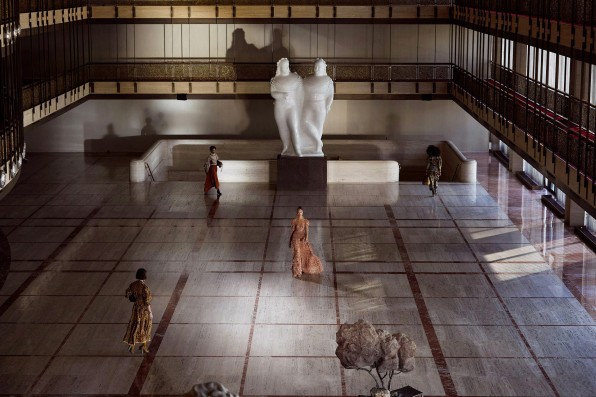
Johnson launched her label in 1998 and quickly made a name for herself for her feminine, bohemian aesthetic. A-listers love the brand, with everyone from Sarah Jessica Parker to Jennifer Lawrence to Greta Gerwig counting themselves as fans. Like many other New York designers, Johnson began by making her collections in the city’s Garment District, but eight years ago, she made the radical decision to transform her entire supply chain. She now travels the globe to find communities of highly skilled craftswomen off the beaten track to make her garments—sometimes in their own homes.
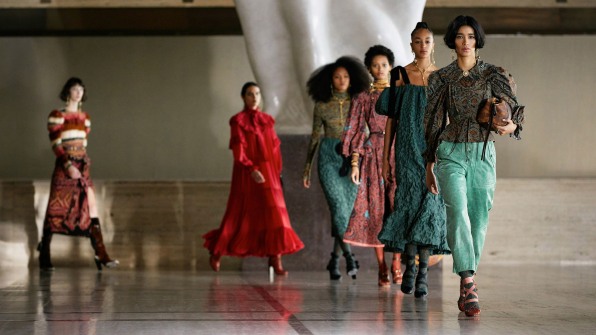
It’s an unconventional approach for an established fashion house, one that requires a lot of flexibility, patience, and financial investment. But she believes it is worth the effort because she is able to support communities of female artisans around the world and also tell a deeper story about the people who make our garments.
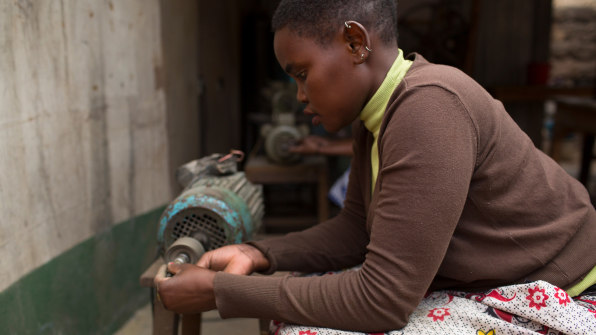
A Feminist Ideology
Johnson grew up in Yorkville, New York, the only child of archeologists. Her father was on an archeological dig in Yugoslavia when he met her mother, who is Serbian. They eventually moved to the United States, but they traveled frequently for their work—everywhere from Iran to Germany—taking their daughter with them. This instilled in Johnson a love of travel that would shape her work.
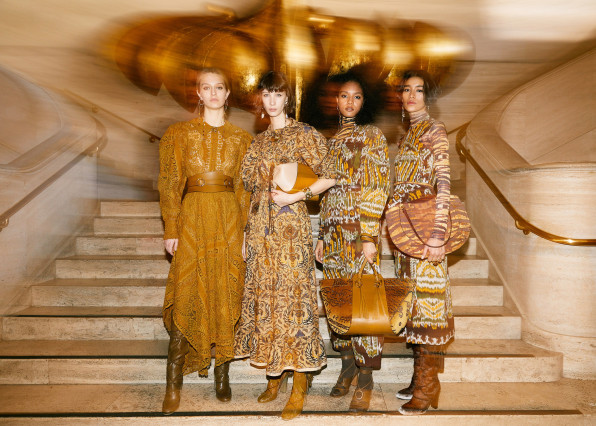
She always loved fashion, but when it was time to attend college, her academic parents encouraged her to get a proper liberal arts education, rather than attend fashion school. So she attended the University of Michigan, where she studied psychology and women’s studies. After graduating, she returned to New York City, where she took a job at a feminist press, but she found it hard to survive in the city on her salary of $17,000 a year. Given how little she was making, she decided she had little to lose in trying to pursue her dream of becoming a designer; if it didn’t work, she could move on to something else. From the start, her entire outlook was shaped by her academic training. “Within my women’s studies work, I was very interested in fashion theory,” she recalls. “The question of how a dress can or cannot empower women.”
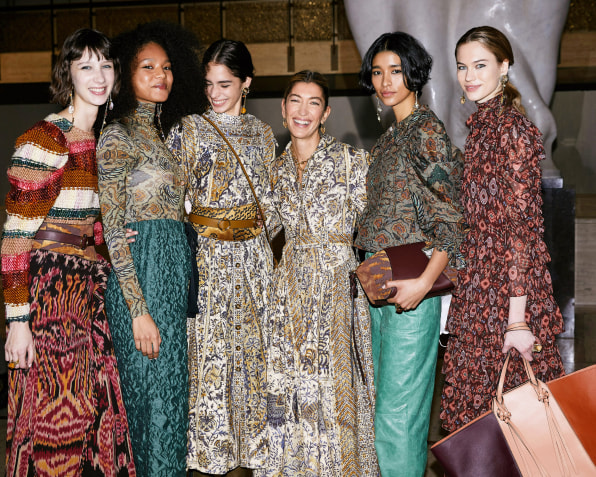
Johnson has always gravitated toward traditionally feminine aesthetics. Her dresses are full of puffed sleeves, billow skirts, lace, and ruffles, and they’re designed to be worn in many contexts, including the workplace. It is part of her larger exploration of gender and power. “I realized early that feminine and feminist are often at odds, and I have always found that problematic,” she says, pointing out that many of her friends who went into corporate careers felt like they had to wear masculinized clothing, like dark suits. “I think my life’s work is to explode the notion that clothes that are colorful or wild or ruffled or voluminous take away our power in a male world or mean that we are not taken seriously. I do think about what I do as power dressing.”
When Johnson debuted her first collection in 2000, a Barneys buyer placed an order. The luxury department store shuttered last year, but for years it was the ultimate fashion tastemaker and an incubator for new designers. This paved the way for many other boutiques to stock their shelves with Johnson’s products. A decade later, Johnson had created an established label, shown her collections twice a year in New York Fashion Week, and had a loyal customer base. But as Johnson has evolved as a designer, she has felt the desire to go beyond empowering her customers to empowering the makers of the garments too. That’s when she decided to change her entire supply chain. “I had reawakened to evolving the language of craft,” she says. “And [I wanted to] rethink who would make the clothes.”
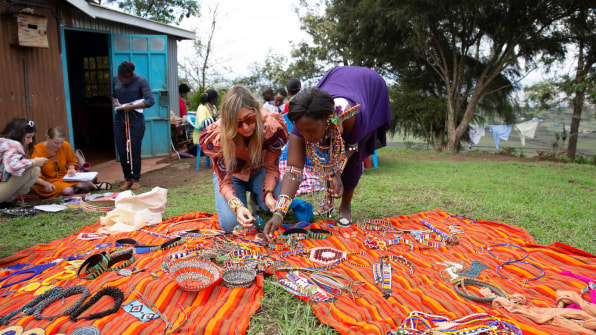
The Makers
Eight years ago, Johnson took a trip to Peru by herself with her two-month-old daughter. She often travels to find new fabrics and find inspiration for prints, but this time, she decided to explore what it would be like to work with artisans who could hand-knit pieces in her collection, something that is hard to do in New York, where factories use machines to knit.
Through a sourcing agent, Johnson found a community of Peruvian women in the Sacred Valley who had the skills to create the chunky sweaters and knitwear she was looking for. She paid these artisans a visit. “We began learning each other’s craft,” she says. “I saw how they knit, and we worked together to create a new symbiotic design language. It’s an incredible creative feedback loop.” In many of these artisan communities, women work with their children, balancing their family responsibilities with earning additional income. “We held each other’s babies,” she says. “This system gives these women access to meaningful work and financial independence, when they would otherwise not be able to do so.”
But partnering with these artisans also came with challenges. In industrial manufacturing, there are equipment and quality checks in place to ensure products and sizing are consistent. While Johnson and her agent can work closely with these women to try to make each garment look the same, she has had to make room for the variations in the pieces. When a set of sweaters comes in, for instance, there might be differences in the color of the yarn or the tightness of the stitches, because everything is handmade. There’s also the problem of timing. Factories are contractually obligated to deliver an order by a particular date, but these women cannot always stick to a timeline. “It’s not an easy road,” she says. “If somebody’s mom gets sick, you may not get the piece for three more weeks. We have to kind of embrace it: These garments are imbued with a certain emotion. There’s beauty that comes from the imperfections, difficulties, and relationships.”
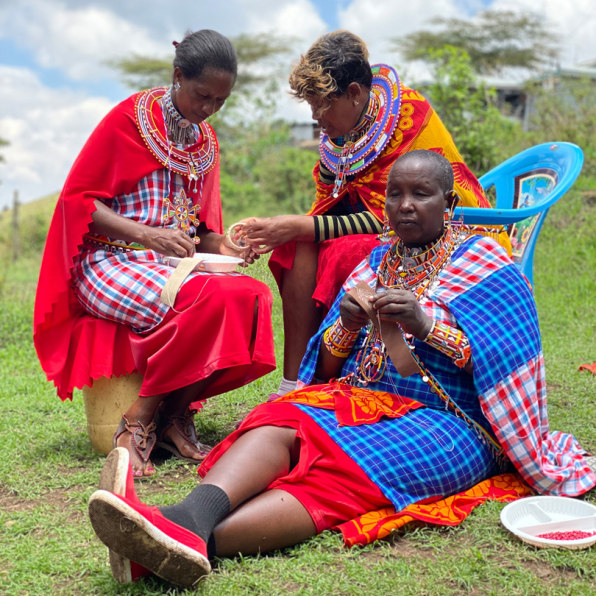
Cultural Collaboration
After that initial trip, Johnson was eager to partner with other artisans around the world to create other pieces in her collection. She has gone to India, where she works with sari makers to create new printed fabric, and China, where she works with silk experts. She partners with Maasai women in Kenya who do beadwork using recycled glass and bone. She went to Uruguay to collaborate with weavers and knitters from a nonprofit called Manos del Uruguay. In the garments that are most time-consuming to knit and are made by a single person, such as a shawl and a cardigan in the current collection, Johnson includes a label signed by the woman who made it.
The fashion industry is rife with designers appropriating from other cultures, from Gucci sending models down the runway in Sikh-style turbans to Victoria’s Secret dressing models in Native American headdresses. This is something Johnson thinks about a great deal; her goal is to partner and cocreate with artisans. In each of these cases, Johnson wants to respect and embrace their traditional craftsmanship, but she doesn’t want to co-opt it wholesale into her pieces. Instead, she sees these relationships as a creative partnership, where both parties bring their skills and aesthetic sensibilities to the table. “I care a lot about making sure this is not an act of cultural appropriation,” she says. “We want to be inspired, but also to give back and to create collaboratively. It often ends up looking quite different from where we started, while honoring the craft.”
Take, for instance, a pullover made by Uruguayan knitters. It is made using an intricate pattern that weaves together different colors of yarn. The chunky knit is typical of the sweaters made in the region for hundreds of years, but Johnson gives it her own twist, by adding her signature voluminous puffed sleeves and styling it with a layered, ruffled skirt. To properly compensate workers for the long hours of labor required to make these garments, Johnson says she pays the artisans more than a fair wage—but this has meant increasing her prices. “I found that I couldn’t make a beautiful sweater from incredible fiber that’s handspun for under $600,” she says. “That’s a lot higher than the sweaters we were making in Italy. It was counterintuitive, but we decided to push prices up.”
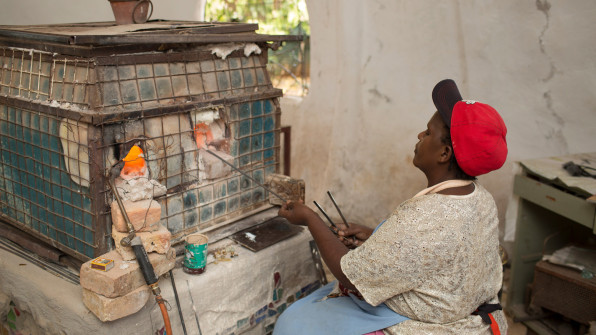
These days, Johnson’s collections are made all over the world by small-scale artisans who work close to their homes. And she’s working to bring on new partners. When COVID-19 passes and she is able to travel again, she hopes to work with communities in Afghanistan and Guatemala. “There is a longer arc where people train other members of their family to do this craft, from their kids to their cousins,” she says, referring to communities of weavers in South America. “They’re bringing their full family into the work. It’s very much a living art.”
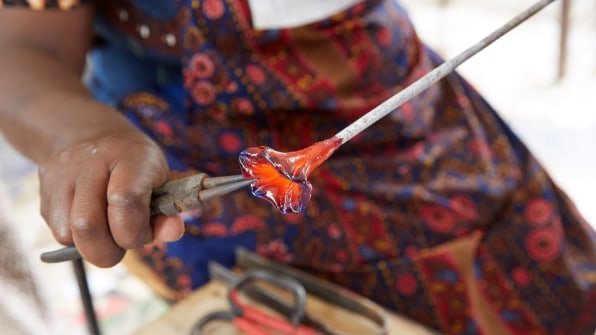
Johnson admits that this approach to making garments is incredibly chaotic. Her fashion show at Lincoln Center had an eerie aura of quietness, as the models walked through the cavernous halls. Up until the morning of the show, it was unclear what pieces would show up in time. “It’s a nightmare,” she says. “It’s maddening for the stylists and the people producing the show. They’ll ask when a piece is getting here, and I’ll say, ‘Not sure. It might not get here. And we’re not even sure what color we’re getting.’”
But to Johnson, it’s worth it. She finds her work more fulfilling because she’s able to use her business to support communities of makers, while also pushing her creativity through the process of codesigning with them. She encourages other designers to take a page from her playbook. “They have to have the grit and the tolerance for things to be imperfect, late, and complicated,” she says. “But it is also very exciting. And when things finally do come through, they’re beautiful, and we love them even more, knowing the stories that are woven into them.”





